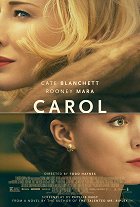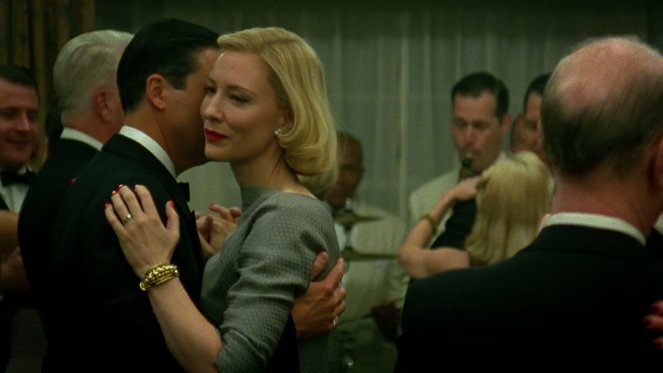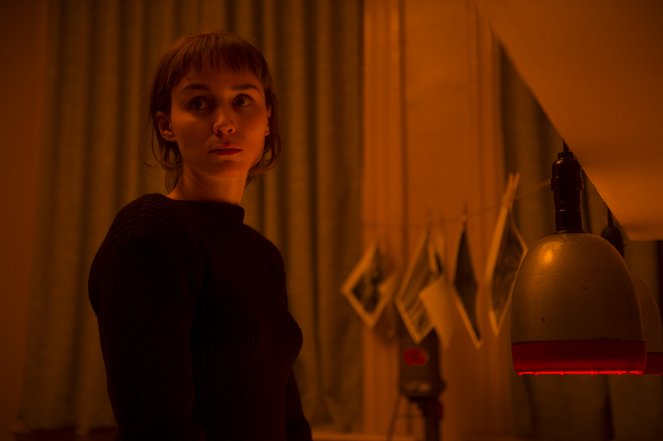Directed by:
Todd HaynesScreenplay:
Phyllis NagyCinematography:
Edward LachmanComposer:
Carter BurwellCast:
Cate Blanchett, Rooney Mara, Kyle Chandler, Jake Lacy, Sarah Paulson, Cory Michael Smith, Carrie Brownstein, John Magaro, Ken Strunk (more)VOD (4)
Plots(1)
Set in 1950s New York, CAROL tells the story of Therese Belivet (Rooney Mara), a young woman in her 20s working as a clerk in a department store who meets Carol (Cate Blanchett), an alluring woman trapped in a loveless, convenient marriage. While Carol breaks free from the confines of marriage, her husband (Kyle Chandler) begins to question her competence as a mother as her involvement with Therese and close relationship with her best friend Abby (Sarah Paulson) come to light. (Entertainment One)
(more)Videos (24)
Reviews (6)
Carol has beautiful cinematography and music, but the story of the central couple is terribly BORING, both psychologically and sexually. Like watching a sunset through a perfectly polished plastic bag. I had to suffer through it on the super uncomfortable wooden seats in Prague’s Municipal House (opening of a film festival).
()
This film about hidden feelings peculiarly chooses an aesthetic based on a precise yet tottering outward exterior. However, the seemingly mediocre and stiff shots are agitated to the point of resembling the work of Wong Kar-wai, offering us a rare and fragile glimpse into the characters’ inner selves as they let their minds dreamily drift to where they want to be despite their noisy surroundings. It’s too easy to dismiss Carol as just another standard romantic film about love against all odds. Todd Haynes and his collaborators created a flawless depiction of the lacerating tension that arises when the characters cannot express their feelings, mainly because of the period and its prejudices, but also simply because of their surroundings, the direction of their lives and their own caution and fears. Carol thus becomes a romantic drama built on reserved appearances and masks, which the film presents to viewers just as the characters present them to each other. Behind every seemingly indifferent gaze there is a silent longing and a troubling uncertainty, which is all the more powerful when its broken by fleeting glances and touches. Because of that, the dramaturgy plays an essential role in the narrative, as it emphasises the duration of those key moments when the couple can share a moment together in that hostile world.
()
Strong acting, masterfully directed and written, but for me it falls into the category of predictable queer drama with everything that it encompasses, including very stenciled emotions. A model American melodrama that deservedly receives acting awards, but at the same time a film that ends only with realization bravado. Cold, forgetful, over-cultivated - at least that's how it felt to me during this year's Cannes competition.
()
I can't help it, but this movie is well rated by critics simply because it is well made, looks nice, and is about two women who love each other and it is portrayed naturally. But I was simply bored. To me, this film seemed completely pointless. The drama is presented incredibly straightforwardly here, there is a lot of abbreviation used which distorts the progression... No, this simply didn't interest me more than the average.
()
In terms of style, Carol is perhaps Todd Haynes’s "straightest" film. Far From Heaven was rather more a meta-commentary on Douglas Sirk’s melodramas than a pure, absorbing and universal love story. In my opinion, Carol is a mature work by a director with a sense of humility toward both the story the and actresses depicting who doesn’t need to prove anything to himself or the audience (yes, I’m looking at you, Alejandro). With its purifying simplicity, behind which you feel the long consideration put into every shot, it reminded me of Lean’s Brief Encounter. In Carol, we also begin with one of the last scenes (which we see from a completely different perspective at the end), the points of view of the two lovers are also taken into equal consideration and their love is of the forbidden, socially unacceptable kind. However, the protagonists have to hide their emotions even more cautiously than the lovers in Lean’s film. Their relationship is perceived as obscene not only morally, but also legally, which enriches the narrative with the elements of a crime story. Therese and Carol must limit their interactions to fleeting touches, timid glances into each other’s eyes and outwardly innocent conversation. Their position in the shot, the settings in which they find themselves, the objects that complement them (or prevent us from seeing them better) often reveal more to us. This is probably why many find the film academically cold and detached. I would rather choose the words “subtle” and “restrained” – the film is not built on grand emotions and contrived plot twists, but on the small gestures and glances through which Carol and Therese communicate with each other, for lack of any other vocabulary, to the point where they can no longer return to their previous identities and no longer pretend to be someone else. Thanks to what is felt but not expressed, the film does not lack a dramatic or erotic tension, which would be unattainable with greater explicitness. In the search for relationship balance, Haynes meaningfully combines several minor motifs (the car ride, a symbol of the protagonists’ enclosed microcosm and their unfulfilled desire for freedom, security and gaining power over perspective and representation through photography) and supporting characters, not one of which ultimately gives Carol and Therese an excuse to verbalise their feelings. Like The Duke of Burgundy, Carol is not only about a lesbian relationship. Probably everyone who has ever been in love has experienced the same uncertainty about how to express feelings for which they don’t have words. 85%
()



Ads